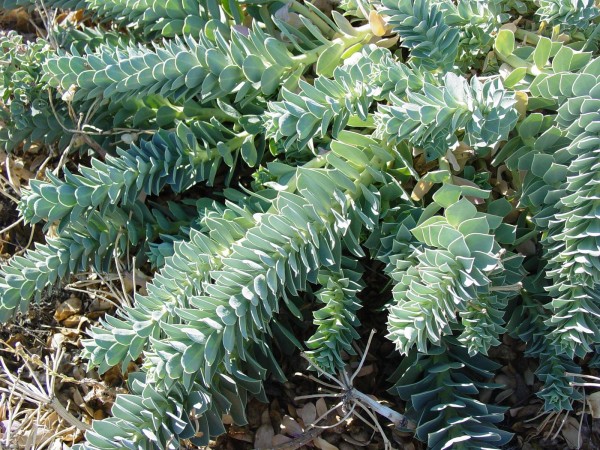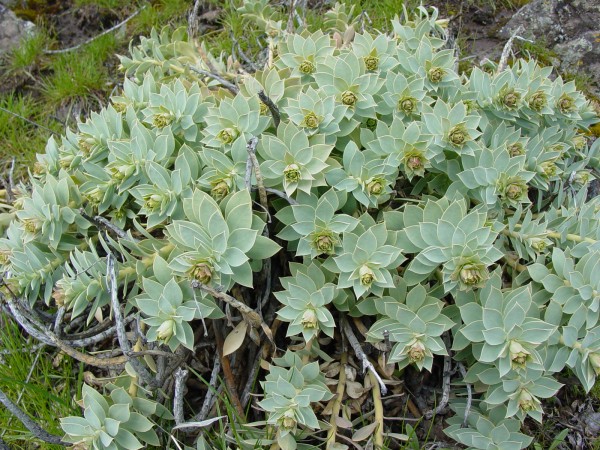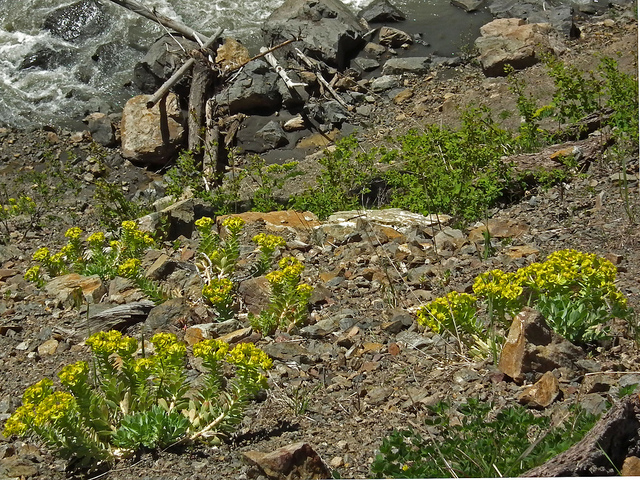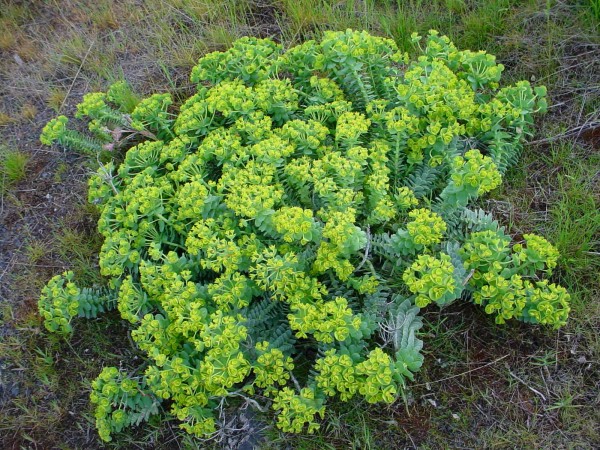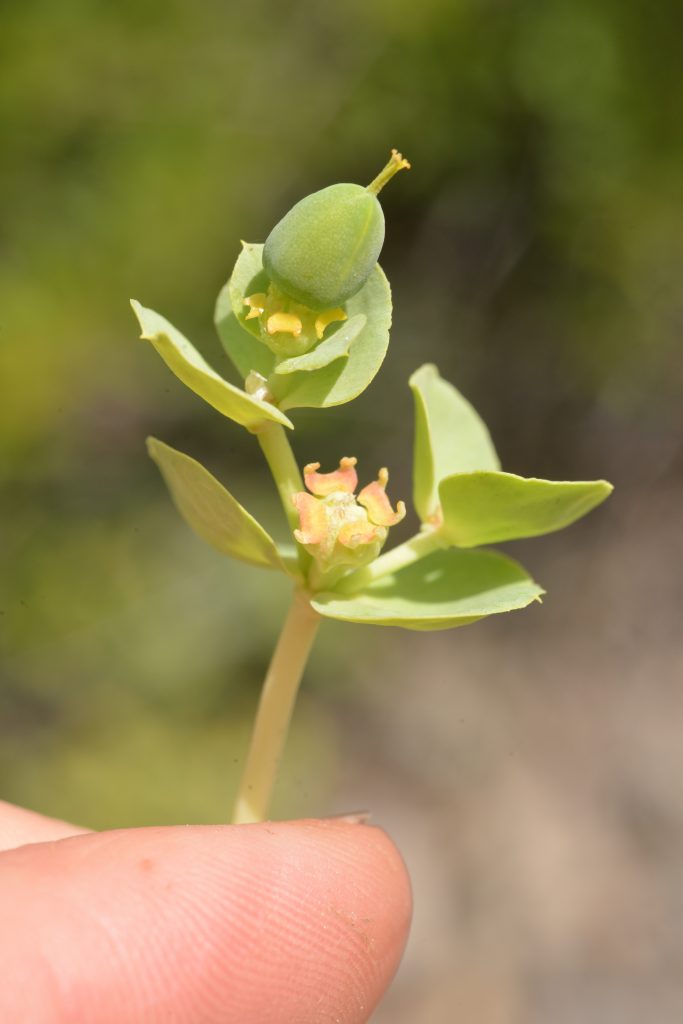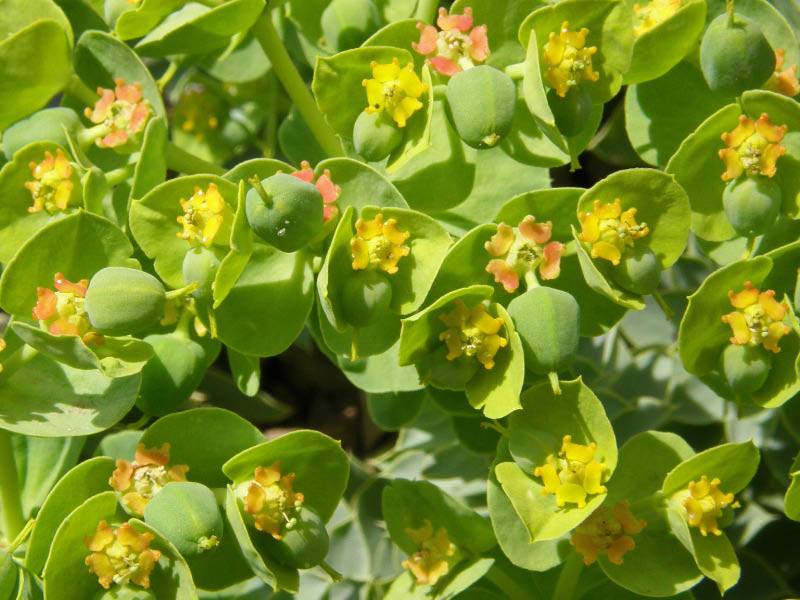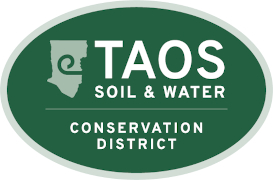Myrtle Spurge
Euphorbia myrsinites
Myrtle spurge’s highly toxic sap causes nausea, vomiting, and diarrhea when ingested. The sap can cause blindness if it gets in people’s eyes and skin contact causes redness, swelling, and blisters. HANDLE WITH EXTREME CAUTION!
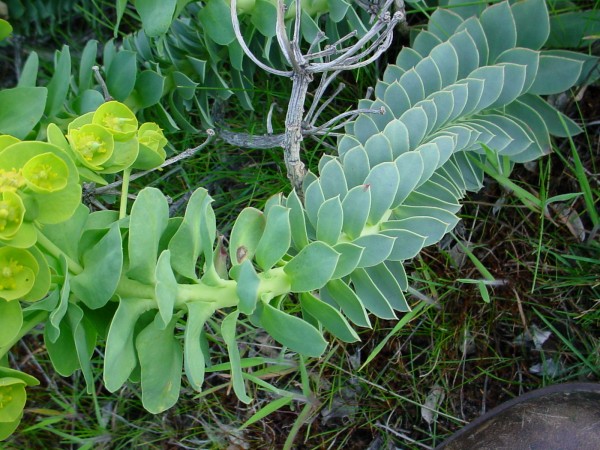
Myrtle spurge (also known as creeping spurge or donkey tail spurge) is a perennial, herbaceous plant. It is an escaped ornamental that inhabits fields, rangelands, gardens, disrupted areas, and along roadsides. It reproduces by seed and root fragments.
Pets can come into contact with the toxic sap just by laying on the plant (stems can break open). When the sap comes into contact with their skin (on paws or faces, it will cause irritation. They tend to lick those areas and the sap can transfer to their mouths causing great injury. Sap on their coats can also transfer unknowingly to owners hands and things they in turn touch. When you get Myrtle spurge on your hands or face, you may need to wash multiple times with soap to remove the sap. If you get the sap on your clothes, you may need to wash them multiple times before the sap is removed. Sap CAN seep through clothes and irritate the skin.
Myrtle spurge is newer to Taos County with only a few known infestations making it easier to contain. It was desirable as an ornamental because it grows easily in sun or shade, requires little water, and thrives in most soils (though it prefers well drained areas). It has no predators to prune back its advance, and its hardiness allows the plant to out-grow and out-compete native plants.
The key to controlling Myrtle spurge is to dig out the plants before they set seeds. Long sleeves and non-cotton gloves are required to touch the plant and pulling is easiest when soil is moist. You will need to keep an eye on the area for some years after pulling as seeds from previous plants can remain viable for up to eight years.
